The past couple of weeks have been so hot here in Chicagoland that we have had to curtail much of our outdoor activity. On most days the temperatures back home in south Florida were actually much cooler. This past week we had one record-breaking day after the other, with three days in a row over 100 degrees (F).
In Illinois this time of the year, sunrise occurs very early (around 5:20 AM), and temperatures have been reaching the 90 degree range before 8:30 AM. At the beginning of summer, days in Illinois are more than one hour and 20 minutes longer than in Florida, although the sun sets at about the same local time in both locations. The longer day and the high angle of the midday sun are great for growing corn, provided there is ample rain.
We got out to bird in nearby Nelson Lake several mornings, usually not walking more than a mile or two over an hour and a half, accepting about all the heat we could bear.
While walking the north prairie of Nelson Lake we sometimes hear dozens of Dickcissels singing in the tall grasses, but get good looks at but a small fraction of the total population. Dickcissel males seem to arrive before the females, in mid May, a few weeks later than other migrants. On June 20 we encountered dozens of singing males, but only five days later we neither heard nor saw a single one! Had they departed, or were they strangely silent and reclusive?
This male Dickcissel was singing exuberantly on May 29th (click on the photos for additional images).
In Audubon’s time, this colorful bird was known as the “Black-throated Bunting.” Its scientific name is Spiza americana, which means American finch. It is actually more closely related to Cardinals than to the true finches.
Our Illinois condo, some 48 miles east of Chicago, sits on land that was a cornfield until only about 5 years ago. Corn and soybean fields extend for miles around. Nearer to Chicago, suburbs have expanded to replace most of them. Remnants of original or restored prairie persist, mostly on State, County and municipal preserves.
Nelson Lake and Marsh occupy 172 acres of the 997.7 acre Dick Young Kane County Forest Preserve, only a five minute drive from our home. An extensive old growth woodland that includes maple, oak and hickory is adjacent to the lake. Restored tall grass prairie occupies the remaining 800 acres.
Our move to Illinois about four years ago exposed us, for the first time, to a habitat that I thought would be, well, flat, windy and boring. Yet, I have come to appreciate the dynamics and the beauty of the prairie.
Wind blowing from behind creates a peak on the head of this bird (a “Crested Black-throated Bunting”), seen on June 20th.
The female Dickcissel lacks the strong black throat and chest markings.
Another female Dickcissel provided one of my favorite photos of this species. Her subdued colors seem so suited to the textures of the sparse vegetation and murky background.
This male assumed almost the same pose.
The amount and distribution of black on the male’s throat and breast varies.
These photos show off the rich rufous of the male Dickcissel’s scapulars.
Only rarely have I seen one pose out in the open on the ground.
Brown-headed Cowbirds can be major nest parasites of Dickcissels, depositing their eggs in anywhere from 30 to 90 percent of their nests. It seems odd that Dickcissels, which evolved in the same habitat as cowbirds, did not develop a defense against their onslaught. We saw many cowbirds in the grass and in the small trees, including this male.
Other birds displayed some yellow in their plumage… a few Bobolinks, in their upside-down garb…
…numerous Common Yellowthroats…
…and a singing Eastern Meadowlark.













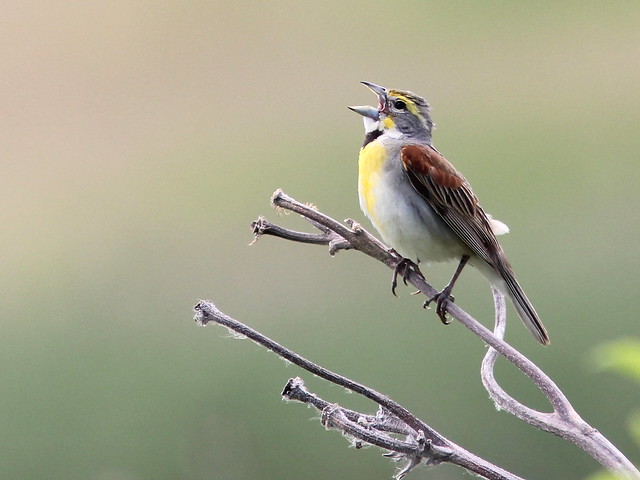
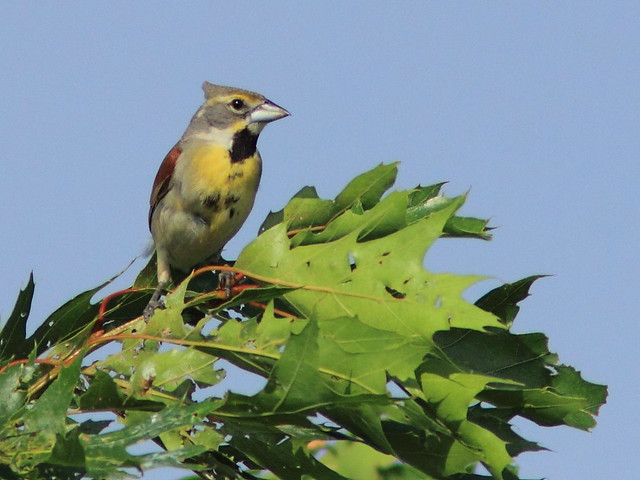
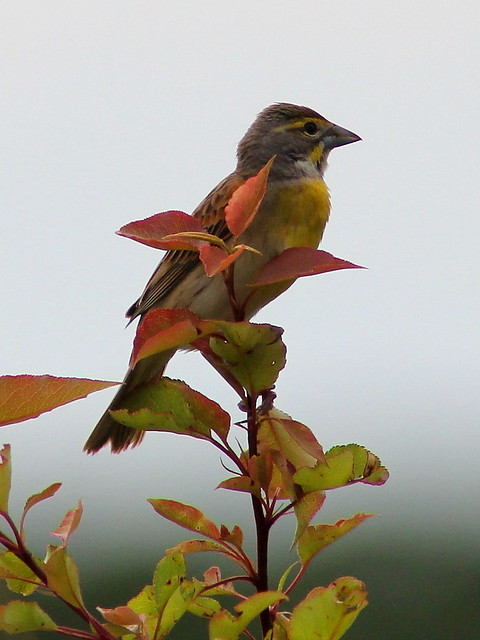
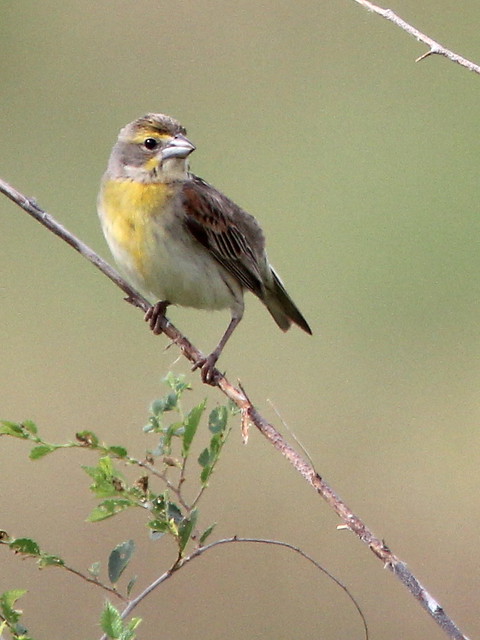
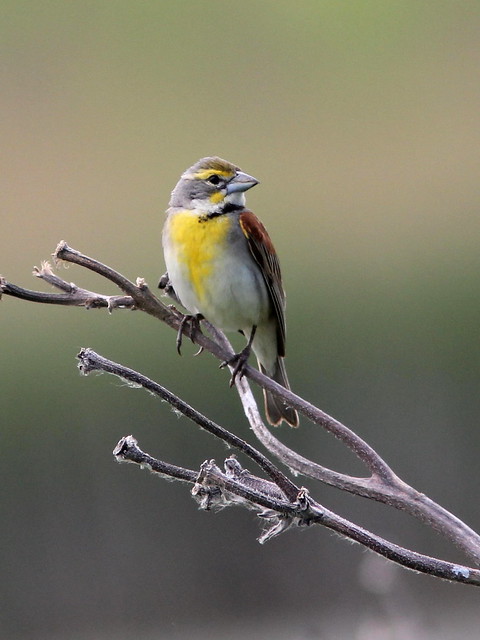
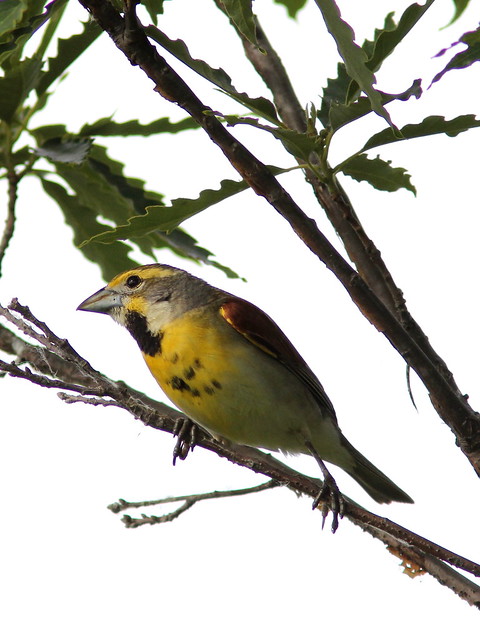
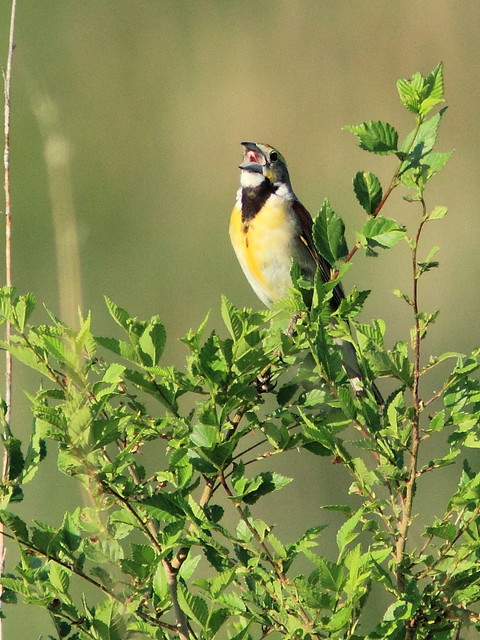
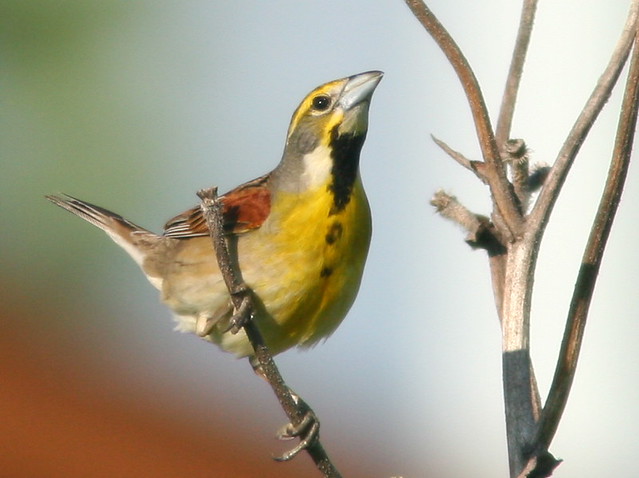
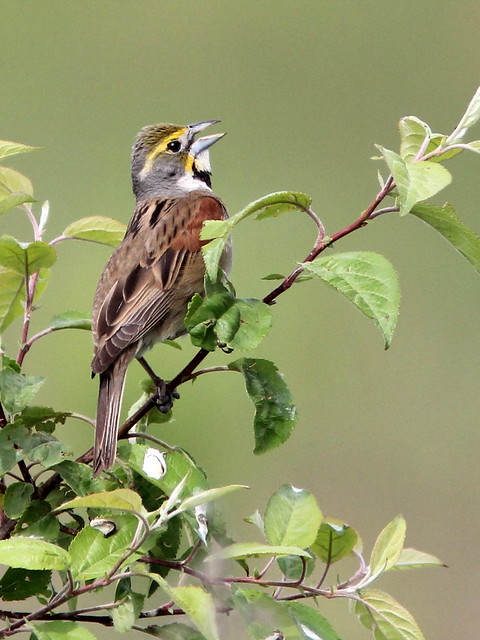

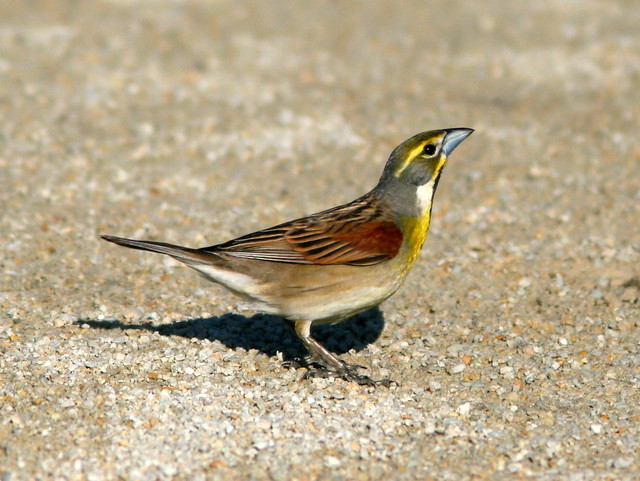
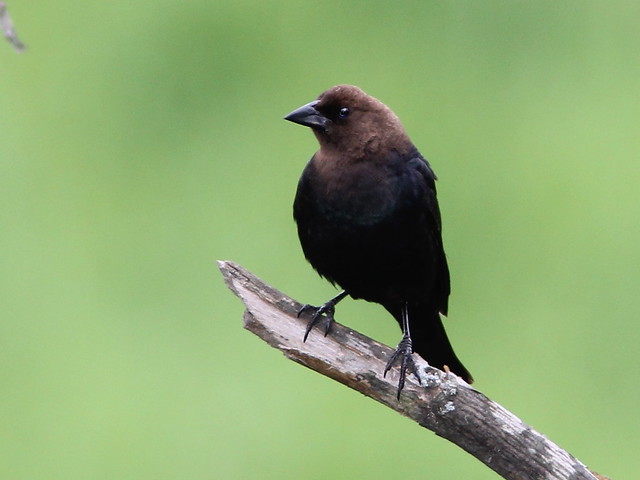
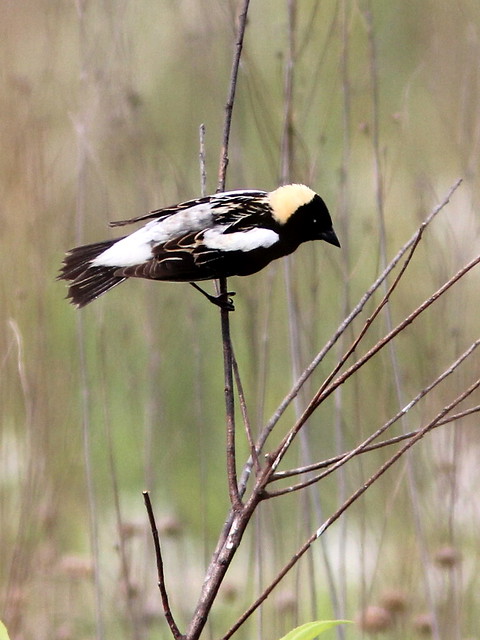
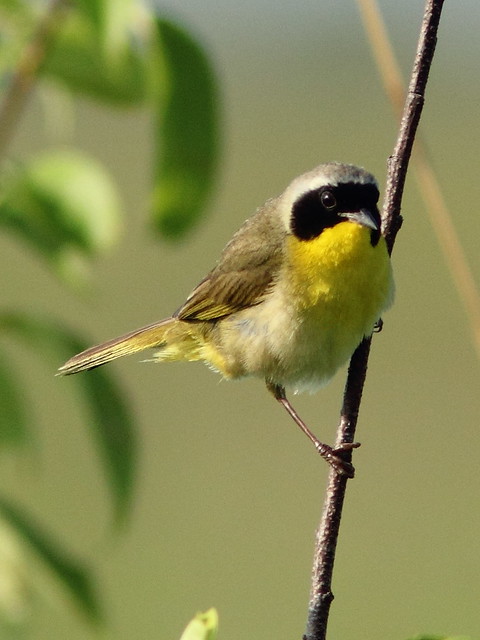
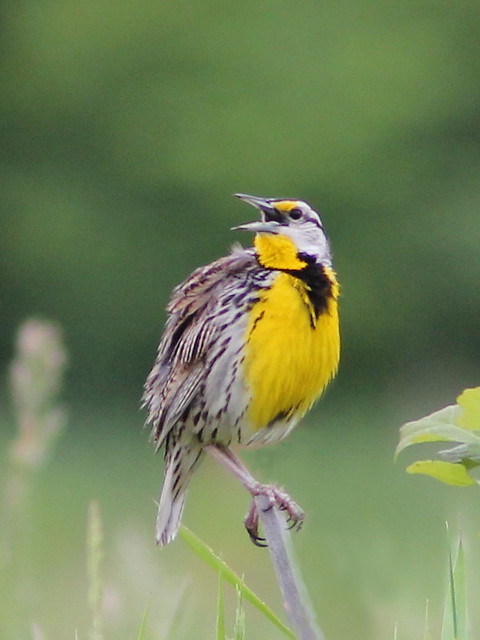
July 8th, 2012 at 11:07 am Beautiful photos love the Crested Black throat bunting and Bobolink
July 10th, 2012 at 11:29 am these are wonderful! i love the bobolinks, too. haven’t seen them since i left wis.
July 10th, 2012 at 12:23 pm Another stunning series!! Boom & Gary of the Vermilon River, Canada.
July 10th, 2012 at 1:15 pm Perfect shots, - great to see. Happy WBW!
July 10th, 2012 at 3:20 pm w o w; such grand photographs; I love each of these birds, would love to see them in real life like you did.
July 10th, 2012 at 3:31 pm Ken, awesome post and photos. I love all the Dickcissel shots and the Bobolink is one I have been wanting to see. Thanks for sharing, have a great day.
July 10th, 2012 at 3:58 pm Awesome shots … great photowork! Irene
July 10th, 2012 at 4:08 pm A wonderful series… beautiful birds to see.
July 10th, 2012 at 5:00 pm A great series of beautiful birds. Take care in all that heat - it has been making headlines in the press even here in Australia.
July 10th, 2012 at 5:28 pm Wonderful captures, Ken!
July 11th, 2012 at 5:01 am I did not know that they’re closer to a cardinal. I learned something today thanks to you. Beautiful bird images today!!! Wood Stork
July 12th, 2012 at 3:12 am Fantastic photographs, fantastic bird. I am greeting
July 12th, 2012 at 7:54 am Oh so beautiful, those Bunting images, as well as the others, but I really, really liked the Bunting images best~
July 18th, 2012 at 6:04 am What a great set of pictures - I’d like to see any one of these birds, let alone all of them. You can tell the day is going to be brutal when it’s 90+ by 9am! I thought I’d let you know that I stepped into the void caused by Springmans decision to close down World Bird Wednesday by setting up Wild Bird Wednesday (!) on my photoblog at Paying Ready Attention – Photo Gallery. Feel free to visit and link. Stewart M - Australia
July 19th, 2012 at 4:28 pm Thank you all for your gracious comments. STEWART, A SPECIAL THANK YOU for stepping in and instituting Wild Bird Wednesday. It already has a wonderful following of bird bloggers and blogs!